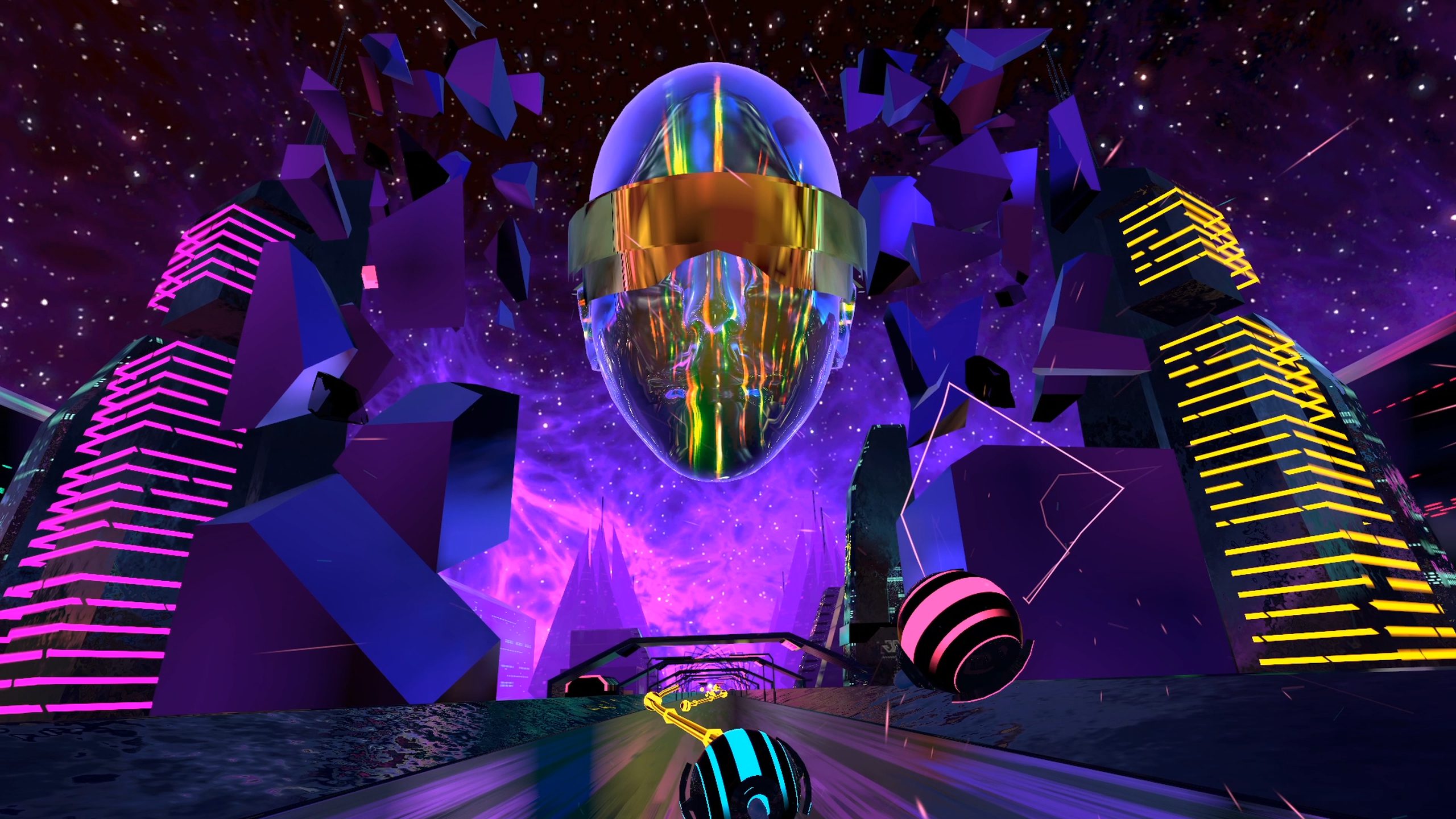Synth Riders — Settling into its own Rhythm
Covered back in 2019 by B3’s own Bryan Taylor; Synth Riders has been out on VR (in its various flavours) for over two years now but has most recently landed on the Oculus Quest 2 from Facebook. In that time the genre has not only evolved but Synth Riders has also expanded a considerable amount since its release.
With the recent release of the Oculus Quest 2 platform in late 2020, Synth Riders has immediately adapted with it’s most recent release to take advantage of the improved graphical and display capabilities of the hardware on offer. What that means to the player is both increased texture resolutions and an increased refresh rate. This makes the game much much smoother and given the speed at which some of the targets come at you and your hand eye coordination relies on meeting those targets in beat with the rhythm its a large quality of life update that just makes Synth Riders a much more comfortable experience.
Content is made up of a number of synthwave pieces from across the last few decades since its prevalence in the eighties and through to its resurgence in the last few years. Whilst alternative offerings like Beat Sabre have focused on paid premium content, Synth Riders has expanded its offering with both a number of paid and free tracks winding in both tracks suited for the gameplay in addition to more recognizable premium content with synthwave powerhouse Muse.

There is also a large difference in the style of track and the mapping of the tracks available from the initial release and through to the latest tracks on offer. Earlier tracks start very simple with fairly simple hand movements and whilst that’s great for new players expecting to be led slowly into Synth Riders, it’s not long before they move onto higher difficulties. Those difficulties; whilst definitely more challenging; still reach a glass ceiling from a design perspective leaving many interested and more capable players looking for more.
The evolving map complexity is likely heavily influenced by the community given custom maps have been supported since the early releases. Expanding your song library in Synth Riders is extremely easy with the prerequisite hardware and software and the community has come together to make this as easy as possible but it’s also very clear that the community doesn’t sit in the “learner” category.
Custom maps can be complex, very challenging and extremely tiring — in a good way. For many songs in the custom category it can be very difficult to actually find Easy or Medium difficulty maps with many of the best mappers concentrating their own time on Expert maps pushing the boundary of their skills on the types of tracks they love. The mapping tools available are great and very intuitive; but most players will only ever want to play the game and not make it.

More recent tracks released by the developers; as either paid or free content; have become more complex and it’s clear the developers have taken a step back and looked at the progression of their player base whilst listening to feedback to implement more complex and ultimately more rewarding content.
Track complexity is only the start as other additions to make the game more immersive or inclusive have been added. Integration with fitness application Yur Fit allows tracking and overlay inside Synth Riders to track calories burned as well as a handy virtual wrist watch which helps players track playing time within the immersive experience without removing the headset, a simple addition but widely overlooked by most developers.
Synth Riders; as mentioned in our earlier review; will always have the freight train that is Beat Saber to contend with and in the eyes of its potential customers the question will always be “Why Synth Riders?” and there are multiple answers to that.
Firstly it’s a very different game. The majority of Synth Riders gameplay is centered around a lack of directional requirement, there are no arrows stipulating directional movement against the artifacts generated. A simple touch and the accuracy of that touch are what determine your success. At higher difficulty levels with more objects to hit it’s somewhat easier than Beat Saber as there are no requirements for you to compute the direction your hands need to move through the block. Experience with longer play sessions also generated much less stress or pressure on the player
Secondly, the style of the game and the core synth attachment mean long winding movements tracking the underpinning chords making up your favourite tracks can make the movements much more relaxing rather than the deliberate back and forth Beat Saber movements.
The perfect situation would be to have both and Synth Riders has evolved and progressed into a game that will always stay in my Quest library installed on my headset. Although I may play Synth Riders after playing Beat Saber it isn’t because it’s not as good or secondary in any way but in reality it’s because the experience is different and I can relax and come down from a frantically exhausting high with some more relaxing gameplay and winding synth tones.
Synth Riders is available now as a stand alone release or in a complete edition inclusive of its current DLC packs on the Oculus Store for Quest, Rift, Vive and Steam VR



Comments are closed.